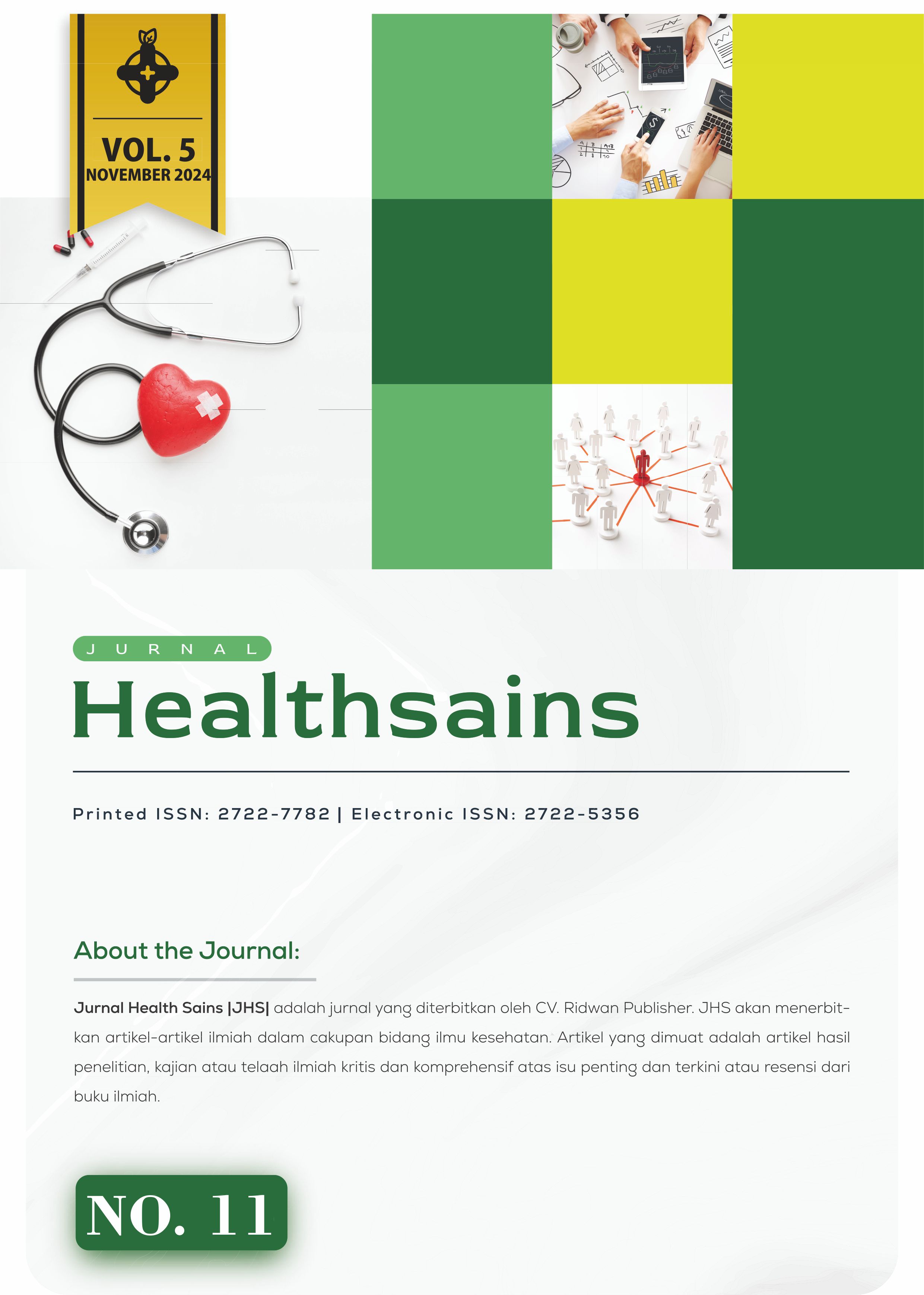The Relationship Between Exclusive Breastfeeding And Stunting Incidence In Toddlers Aged 24-60 Months At The Panombean Panei Health Center
DOI:
https://doi.org/10.46799/jhs.v5i11.1381Keywords:
Exclusive breastfeeding, Stunting, Nutritional statusAbstract
Indonesia as a developing country has many health problems, one of these problems is stunting. According to WHO, stunting is a condition where a child's z-score is less than -2 SD/standard deviation as measured on the WHO growth curve. Many factors cause toddlers to experience stunting, such as poor nutritional status during the mother's pregnancy, parenting patterns, and exclusive breastfeeding. Exclusive breastfeeding is the initial food for babies because it contains essential nutrients for immunity so that babies do not get infected easily. In North Sumatra, the stunting incidence rate is 21.1%, especially in Simalungun Regency, the stunting incidence rate is 17.4%. Seeing the conditions that occurred, interest arose in conducting research in the Simalungun Regency area, specifically in the Panombean Panei area. This research uses observational analytical methods with a cross sectional study research design. The sampling technique used in this research was total sampling with a total of 50 toddlers who met the criteria. The assessment of exclusive breastfeeding was carried out by completing a questionnaire by mothers of toddlers. The statistical test used is Chi-Square. The research results showed that 29 (58%) toddlers were given breast milk non-exclusively, so there were 21 (42%) stunted toddlers and 8 (16%) normal toddlers. There are 21 (42%) toddlers who receive exclusive breast milk, of which 9 (18%) toddlers are stunted and 12 (24%) toddlers are normal. The results of the analysis show a p-value = 0.035, which means there is a relationship between exclusive breastfeeding and the incidence of stunting. The conclusion of this research is that there is a relationship between exclusive breastfeeding and the incidence of stunting in toddlers aged 24-60 months at the Panombean Panei Health Center.
References
Aprilia, D. (2022). Perbedaan Risiko Kejadian Stunting Berdasarkan Umur Dan Jenis Kelamin. Jurnal Kebidanan, 11(2), 25–31.
Black, M. M., Trude, A. C. B., & Lutter, C. K. (2020). All children thrive: integration of nutrition and early childhood development. Annual Review of Nutrition, 40(1), 375–406.
Concato, J., Shah, N., & Horwitz, R. I. (2017). Randomized, controlled trials, observational studies, and the hierarchy of research designs. In Research Ethics (pp. 207–212). Routledge.
Lestari, E. D., Hasanah, F., & Nugroho, N. A. (2018). Correlation between non-exclusive breastfeeding and low birth weight to stunting in children. Paediatrica Indonesiana, 58(3), 123–127.
Mutunga, M., Rutishauser-Perera, A., Laillou, A., Prak, S., Berger, J., Wieringa, F. T., & Bahwere, P. (2021). The relationship between wasting and stunting in Cambodian children: Secondary analysis of longitudinal data of children below 24 months of age followed up until the age of 59 months. PLoS One, 16(11), e0259765.
North, K., Gao, M., Allen, G., & Lee, A. C. C. (2022). Breastfeeding in a global context: epidemiology, impact, and future directions. Clinical Therapeutics, 44(2), 228–244.
Novayanti, L. H., Armini, N. W., & Mauliku, J. (2021). Hubungan Pemberian ASI Eksklusif dengan Kejadian Stunting pada Balita Umur 12-59 Bulan di Puskesmas Banjar I Tahun 2021. Jurnal Ilmiah Kebidanan (The Journal Of Midwifery), 9(2), 132–139.
Sari, A. L. (2022). Exclusive breastfeeding as an effort to prevent stunting in toddlers. NeuroQuantology, 20(5), 3668–3675.
SJMJ, S. A. S., Toban, R. C., & Madi, M. A. (2020). Hubungan pemberian ASI eksklusif dengan kejadian stunting pada balita. Jurnal Ilmiah Kesehatan Sandi Husada, 9(1), 448–455.
Wardita, Y., Suprayitno, E., & Kurniyati, E. M. (2021). Determinan Kejadian Stunting pada Balita. Journal Of Health Science (Jurnal Ilmu Kesehatan), 6(1), 7–12.
Wijaya, F. A. (2019). ASI Eksklusif: nutrisi ideal untuk bayi 0-6 bulan. Cermin Dunia Kedokteran, 46(4), 296–300.
Firna, E ., & S. A. (2023). 3292-Article Text-11449-1-10-20230508. 6(5), 814–824.
Manggala, A. K., Kenwa, K. W. M., Kenwa, M. M. L., Sakti, A. A. G. D. P. J., & Sawitri, A. A. S. (2018). Risk factors of stunting in children aged 24-59 months. Paediatrica Indonesiana, 58(5), 205–212. https://doi.org/10.14238/pi58.5.2018.205-12
Agustina, R., Prabandari, Y. S., & Sudargo, T. (2020). Hambatan pemberian ASI ekslusif pada ibu bekerja: teori ekologi sosial. Jurnal Gizi Klinik Indonesia, 17(2), 64. https://doi.org/10.22146/ijcn.50155
Downloads
Published
Issue
Section
License
Copyright (c) 2024 Amelia Kurnia Purba, Yeni Halim, Yeni Halim

This work is licensed under a Creative Commons Attribution-ShareAlike 4.0 International License.
Authors who publish with this journal agree to the following terms:
- Authors retain copyright and grant the journal right of first publication with the work simultaneously licensed under aCreative Commons Attribution-ShareAlike 4.0 International (CC-BY-SA). that allows others to share the work with an acknowledgement of the work's authorship and initial publication in this journal.
- Authors are able to enter into separate, additional contractual arrangements for the non-exclusive distribution of the journal's published version of the work (e.g., post it to an institutional repository or publish it in a book), with an acknowledgement of its initial publication in this journal.
- Authors are permitted and encouraged to post their work online (e.g., in institutional repositories or on their website) prior to and during the submission process, as it can lead to productive exchanges, as well as earlier and greater citation of published work.






